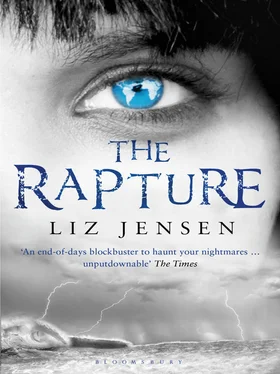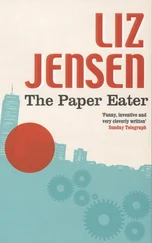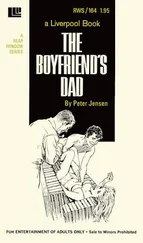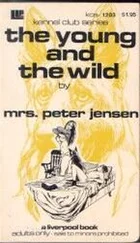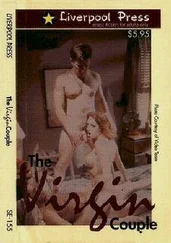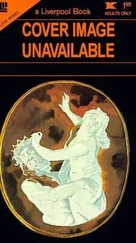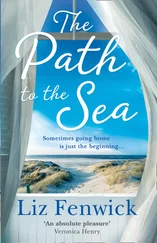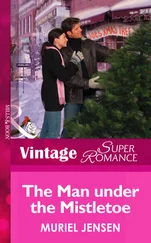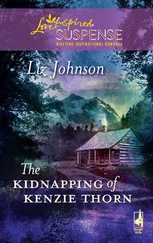‘Where did you see us?’
‘Up in the sky.’ I wait some more. ‘But we went different ways.’
‘Where did we go?’
‘After the thunder we went to the golden circle. Then we were caught up in the air. But you went to one place and I went to another place.’
‘Look at me, Bethany’. Slowly she lifts her face and our eyes meet. Hers are glittering. ‘Bethany. We won’t go different ways. I won’t leave you.’
She shakes her head slowly, as though it is an immeasurable weight. ‘It doesn’t work that way. But I just want to tell you, it’s OK. You mustn’t feel bad.’
‘About what?’
She seems to be looking right through me, at something on the other side of my head.
‘About the way it ends.’
I enter the kitchen feeling dazed. ‘I just spoke to Ned,’ says Frazer Melville, looking up from his laptop. I have left Bethany on the sofa, staring catatonically at the wall. ‘How did it go with Bethany?’ When I give him a condensed account, he sighs heavily. ‘Jesus. Poor kid. No wonder she’s screwed up.’
‘What’s the news from London?’
‘The seismic data’s been published on the web. The good news is, some prominent scientists are getting on board.’
‘Who?’
‘Kasper Blatt, Akira Kamochi, Walid Habibi, Vance Ozek.’ I can’t put faces to anyone but Kamochi, but the names are all familiar. ‘The bad news is that Ned says the other lobbying they’ve done has hit a brick wall. No one wants to believe it. But the rumour’s spreading on the net and the data’s out there. By the way, he says to watch the news.’ I flick on the TV and zap to BBC World. Another failed assassination attempt on the president of Iran: three bodyguards dead. They show some blood-stained paving. More food riots in South America. But it’s the third, far more outlandish headline, that grabs our attention.
It concerns graffiti in Greenland.
The local correspondent’s report thumbnail-sketches a territory of Inuits with huskies, snowmobiles, alcohol problems and, more recently, livelihoods collapsing due to climate change: a Danish-administered enclave which from June to August is bathed in nonstop, hallucinogenic sunshine. But during the winter months, like now, it’s a land engulfed in darkness, illuminated only by electricity, the moon, and the night sky, with its canopy of stars and the magic swirls of aurora borealis—
And now, as discovered within the last hour, graffiti.
Giant graffiti. A jumble of numbers and letters. Some sort of code. It straddles fifty kilometres of ice cap, far from anywhere habitable. And it glows in the dark. Frazer Melville’s face is breaking into a grin. A satellite image has appeared: a pale blue tracery of semi-legible numbers and characters — seemingly meaningless — etched on the night-darkened landscape. They’re impossible to make out clearly but each cipher, says the anchorman, measures at least ten kilometres high and across. I can see the number 3, and the letters E and B and what looks like a hyphen, and an N. Out there in the darkness, on the Greenlandic ice, somebody with a monstrous ego has been determinedly expressing themselves. Or—
‘Ned must’ve tipped off a local camera crew,’ murmurs Frazer Melville. ‘Just watch.’ The camera lights create a halo around the Greenlandic reporter’s head, broadened and flattened by the TV’s wide-screen function. It’s minus twenty degrees and he’s trembling with cold beneath the fur-trimmed hood of his anorak. Against the velvet Arctic sky, there’s a pulsing light-show of red, blue and green, a swish of colour that makes it look as if the scene has been filtered through the gaudy wing of a giant insect. ‘The characters on the ice are so big you can only see them by satellite,’ he shivers, the northern lights pulsing behind him. ‘Space shots show they weren’t there yesterday but there’s no mistaking them today. They’re calling it the world’s biggest ever publicity stunt. I’m standing here on the down-stroke of the number four. Now this line forms a ridge that stretches all the way over to the horizon, as far as the eye can see.’
The camera pulls back to show it, at the same time revealing the reporter’s female companion, whom he introduces as a local biologist. Bending down, she uses a small ice-pick to detach a chunk of whiteness tinged with a pale mauve glow which she holds out to the camera. She pronounces it to be a phosphorescent liquid that has frozen on contact with the ice. The notion seems to please her profoundly.
‘The dye appears to be organic, and to contain the crushed shells of some form of crustacean. We don’t know exactly what it is yet, we’ve sent samples to be analysed.’ It’s bluish-green with a touch of mauve: a colour Picasso liked. A colour I have seen before. In this very house, in a row of jars.
I laugh. ‘How do you liquidise them?’
‘Cement mixer, at a guess,’ grins Frazer Melville. He couldn’t look more thrilled if he had laid a thunder egg.
A beleaguered-looking man from the Kennedy Space Center materialises. ‘A man rang in. He didn’t give a name, he just said to take a close look at Greenland. Then he gave the co-ordinates and hung up. We zoomed in and saw some faint light-traces. We sharpened them up and realised it was a message.’
Now they’re re-showing satellite pictures of the thin stitching of ghostly ciphers. It’s the kind of writing you imagine a spirit scrawling laboriously across a ouija board. ‘The ice cap, shrouded in the darkness ofwinter, has been used as a giant blackboard,’ says the anchorman back in the studio. ‘But who’s playing teacher? And what’s the lesson? Well, here’s where the geo-graffiti phenomenon gets interesting.’ The camera focuses on the mystery ciphers, with a red graphic creeping across to delineate them more clearly. BH63N-os.24ECHq. ‘To anyone with a background in science, this isn’t even a code. The central ciphers 63N-os.24E are geographical co-ordinates of latitude and longitude, and the final three characters CH4 are the chemical symbol for methane. The location is rig a hundred kilometres off the coast of Norway known as Buried Hope Alpha, so we can assume that’s what the letters B and H stand for. Now the rig’s owned and run by the energy giant Traxorac, who are drilling for frozen methane. We’ll be speaking to them shortly. But first, here’s what Greenpeace had to say.’
‘We like our stunts, but this one isn’t ours,’ says the spokeswoman emphatically but with what might be a hint of regret. ‘I’d say that the message is probably an environmental one and that this rig needs investigating. Methane hydrates are highly volatile and if someone’s decided to draw the world’s attention to the dangers of exploiting them, we’re gald.’
‘Bingo!’ whispers Bethany hoarsely, from the doorway. She’s huddled in a duvet, her face flushed as though she has woken from a nightmare. ‘Look,’ she points at the screen. ‘There’s our rig. The one with the cunt in the crane.’ Frazer Melville pulls up a chair for her and she settles in it heavily. She clutches her bandaged arms to her chest and fixes her eyes on the TV.
Evidence of human endeavour in a hostile natural setting can be a noble sight. Shot from the air, Buried Hope Alpha looks like the ambitious, life-enhancing piece of engineering that it was no doubt conceived to be. ‘Traxorac has absolutely nothing to hide here,’ says the rig’s site controller, Lars Axelsen. The Norwegian stands on the vast platform wearing a hard hat. Behind him, overalled technicians come and go, clutching tools and palmtops. Far below them, the sea is a restless skin of dark blue, close to black, its high waves battering the struts. When asked his reaction to the message on the ice cap, he expresses puzzlement. ‘We’ve sent down a remote-controlled vehicle to assess the picture, but the first reports indicate that everything’s as it should be down there. Security is obviously our number one concern. If there does turn out to be some kind of malfunction, we wouldn’t be able to rule out some form of sabotage. Or hostile intervention. With the terrorist threat out there…’
Читать дальше
